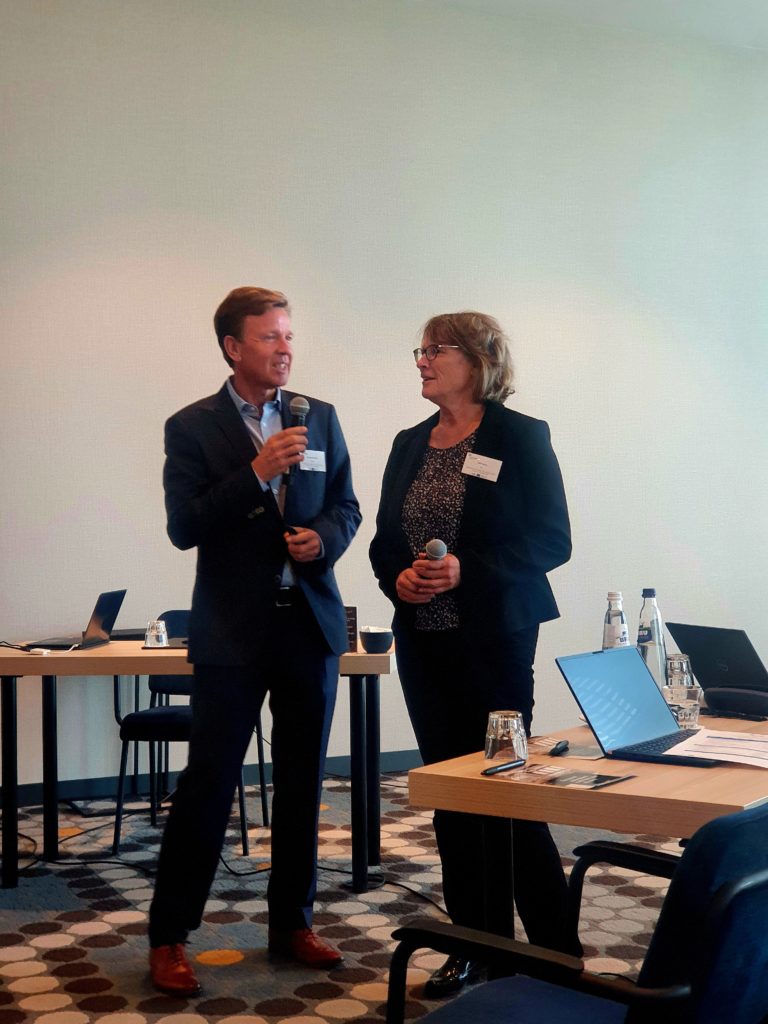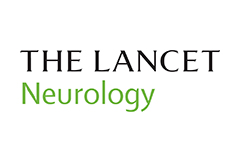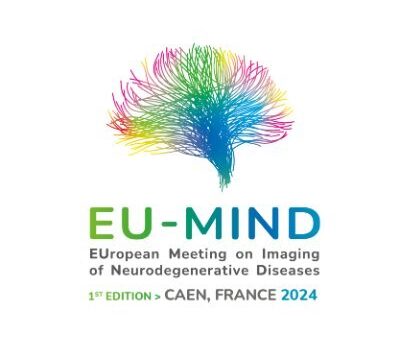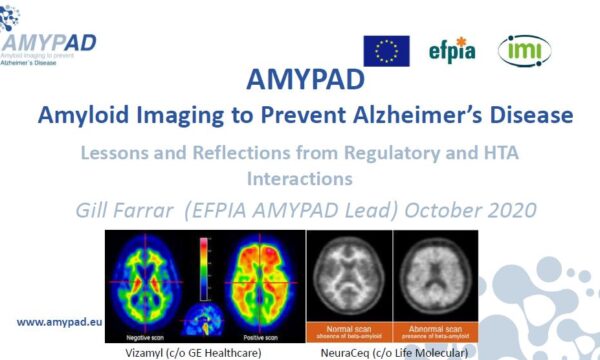On 22 and 23 September, more than 80 delegates from the AMYPAD consortium came together in Amsterdam (Netherlands) to attend the final AMYPAD General Assembly meeting. After two and a half years of virtual meetings, we had the opportunity to meet again in person with all partners and external collaborators. The 2-day event celebrated the progress and main achievements. Recent results, future planning and activities were the main focus of the meeting.
Time has certainly flown! AMYPAD was funded by the Innovative Medicines Institute (now known as the Innovative Health Initiative, IHI) in conjunction with 15 partner organisations for a period of 6 years, until 30 September 2022. Led by VU University Medical Center Amsterdam and GE Healthcare, the AMYPAD project is a collaborative research initiative aiming to improve the understanding, diagnosis and management of Alzheimer’s disease through the utilisation of ß-amyloid PET imaging.
Frederik Barkhof and Gill Farrar, coordinators of the AMYPAD project, kicked off the General Assembly. Following on from the introductory session, the first session was held on the Diagnostic and Patient Management Study (DPMS). With a total of 844 patients randomized on 900 originally planned, the study recruited 245 people with Subjective Cognitive Decline, 342 with Mild Cognitive Impairment and 258 with dementia. All visits and scanning activities have been completed by sites. Primary and secondary endpoints results as well as health-economics analyses were presented. After that, a session was dedicated to the Prognostic and Natural History Study (PNHS). The study comprises collaboration among sites and parent cohorts in several countries across Europe. In addition to EPAD, there were 9 other Parent Cohorts actively recruiting into AMYPAD. These are: EMIF-AD (60++ and 90+), ALFA+, FACEHBI, FPACK, UCL 2010-412, Microbiota, AMYPAD DPMS (VUMC) and H70. The recruitment was formally ended on 30 April 2022 and the study succeeded in recruiting 1,321 participants. The number of prospective scans collected within AMYPAD PNHS is 1,419 (1,192 baseline and 227 follow-up). The non EPAD Parent Cohorts also shared their historical data and therewith the total number of scans in AMYPAD PNHS is over 2700. Harmonization, integration, and the data-base were also reported. Following on from this presentation, a session on dissemination was held, where the communication activities and tools were presented. After a short break, the screen was given in turn to John Clifford (IHI) who gave feedback on the AMYPAD progress and presented the new IHI initiative. Next, updates were provided on the project management including the final reports and administrative closure. The first day was brought to a close with a discussion on the AMYPAD post-IMI period including approaches on sustainability, funding opportunities and scientific initiatives. Data governance with DTA, data-access and publication policy post-IMI were also presented.
On the second day, the AMYPAD consortium gathered for a scientific exchange and discussion on the technical developments. The WP2 “Tracer delivery, PET scanning and image analysis” team presented main findings and quantifications results from both clinical studies. Next, the floor was given to nine AMYPAD researchers to showcase their respective work and results. Gill Farrar and Frederik Barkhof then drew the meeting to a close, thanking all the participants for their active contribution to the meeting and all AMYPAD members for their enthusiasm and dedication during the last six years!




